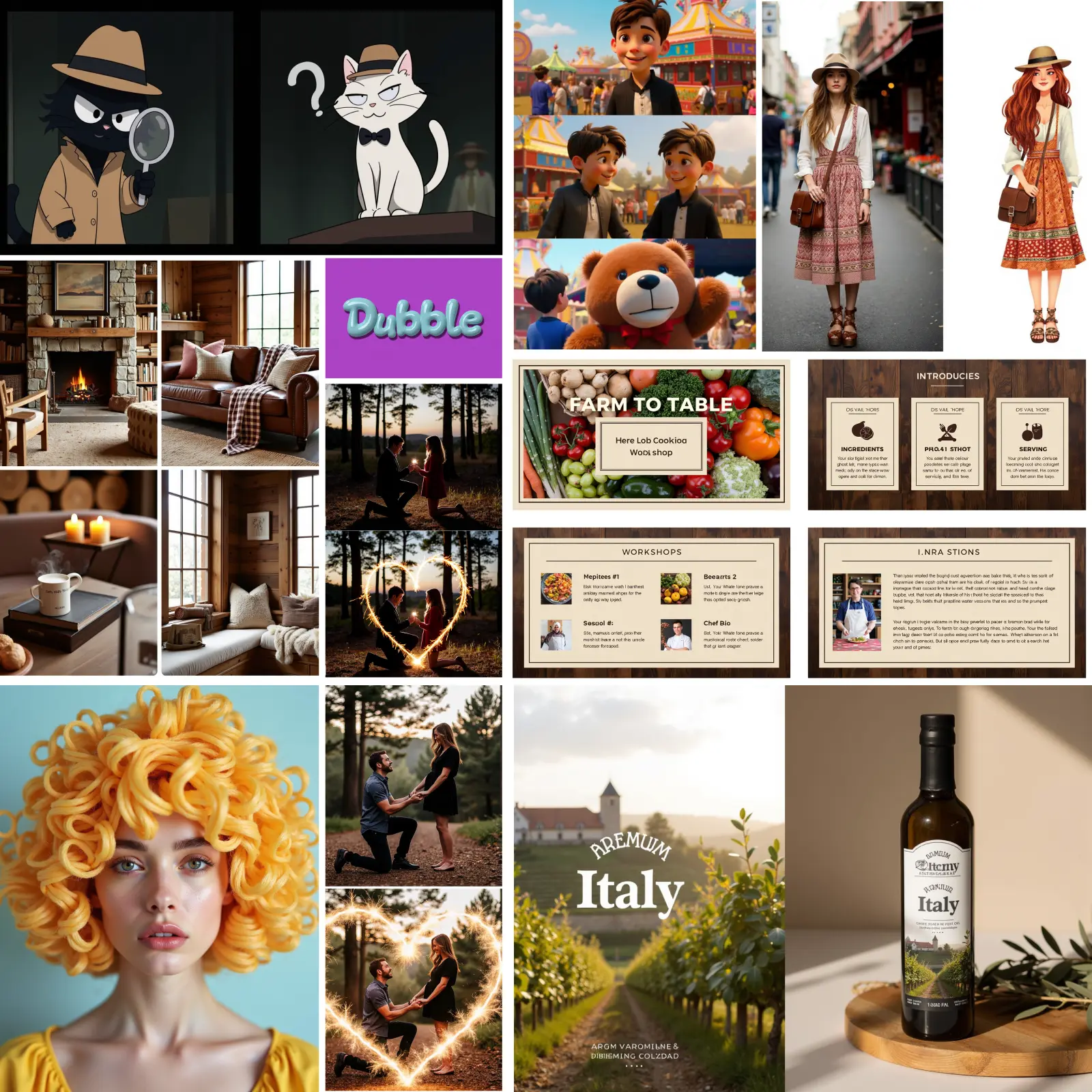ComfyUI Node: GR Tile and Border Image
GR Tile and Border Image
CategoryGraftingRayman/Tiles
GraftingRayman (Account age: 447days) Extension
GraftingRayman Latest Updated
2025-03-24 Github Stars
0.06K
How to Install GraftingRayman
Install this extension via the ComfyUI Manager by searching for GraftingRayman- 1. Click the Manager button in the main menu
- 2. Select Custom Nodes Manager button
- 3. Enter GraftingRayman in the search bar
Visit ComfyUI Online for ready-to-use ComfyUI environment
- Free trial available
- 16GB VRAM to 80GB VRAM GPU machines
- 400+ preloaded models/nodes
- Freedom to upload custom models/nodes
- 200+ ready-to-run workflows
- 100% private workspace with up to 200GB storage
- Dedicated Support
GR Tile and Border Image Description
Create tiled images with borders, patterns, and textures using specified rows, columns, and border styles, including unique visual elements.
GR Tile and Border Image:
The GR Tile and Border Image node is designed to create a tiled version of an input image, with optional borders around each tile. This node is particularly useful for generating complex patterns and textures by repeating an image in a grid format. It allows you to specify the number of rows and columns for the tiling, as well as the color and thickness of the borders around each tile. Additionally, it offers the capability to flip a random tile and apply a distinct border color to it, adding a unique visual element to the tiled image. This node is ideal for AI artists looking to create intricate designs and patterns with ease.
GR Tile and Border Image Input Parameters:
image
The input image to be tiled. This parameter accepts a tensor representing the image data. The image will be repeated in a grid format based on the specified rows and columns.
rows
The number of rows in the tiled image. This parameter determines how many times the input image will be repeated vertically. The minimum value is 1, and there is no explicit maximum value, but it is constrained by the available memory.
columns
The number of columns in the tiled image. This parameter determines how many times the input image will be repeated horizontally. The minimum value is 1, and there is no explicit maximum value, but it is constrained by the available memory.
colour
The color of the border around each tile. This parameter accepts a color value that will be used to create the border around each tile. The color can be specified in various formats, such as RGB or hexadecimal.
border
The thickness of the border around each tile. This parameter determines the width of the border in pixels. The default value is 0, meaning no border will be applied. The minimum value is 0, and there is no explicit maximum value, but it is constrained by the available memory.
border_thickness
The thickness of the red border applied to the flipped tile. This parameter determines the width of the red border in pixels for the randomly flipped tile. The default value is 5 pixels.
seed
An optional seed value for random number generation. This parameter ensures reproducibility of the random tile flipping. If not provided, a random seed will be used.
flipped_tile_image
An optional image to replace the randomly flipped tile. This parameter allows you to specify a different image to be used for the flipped tile instead of flipping the original tile.
GR Tile and Border Image Output Parameters:
new_image
The resulting tiled image with optional borders. This output is a tensor representing the tiled image, with the specified number of rows and columns, and optional borders around each tile.
red_bordered_image
The resulting tiled image with a red border around the flipped tile. This output is a tensor representing the tiled image, with a distinct red border applied to the randomly flipped tile.
GR Tile and Border Image Usage Tips:
- To create a seamless pattern, ensure that the input image has edges that align well when repeated.
- Use the border parameter to add visual separation between tiles, which can enhance the overall design.
- Experiment with different border colors and thicknesses to achieve various artistic effects.
- Utilize the seed parameter to ensure consistent results when generating patterns that include a randomly flipped tile.
GR Tile and Border Image Common Errors and Solutions:
RuntimeError: CUDA out of memory
- Explanation: This error occurs when the GPU runs out of memory while processing the image.
- Solution: Reduce the number of rows and columns, or decrease the border thickness to lower the memory usage.
ValueError: Invalid color value
- Explanation: This error occurs when the specified color value for the border is not valid.
- Solution: Ensure that the color value is in a valid format, such as RGB or hexadecimal.
TypeError: Input image must be a tensor
- Explanation: This error occurs when the input image is not provided as a tensor.
- Solution: Convert the input image to a tensor format before passing it to the node.
GR Tile and Border Image Related Nodes
RunComfy is the premier ComfyUI platform, offering ComfyUI online environment and services, along with ComfyUI workflows featuring stunning visuals. RunComfy also provides AI Playground, enabling artists to harness the latest AI tools to create incredible art.


